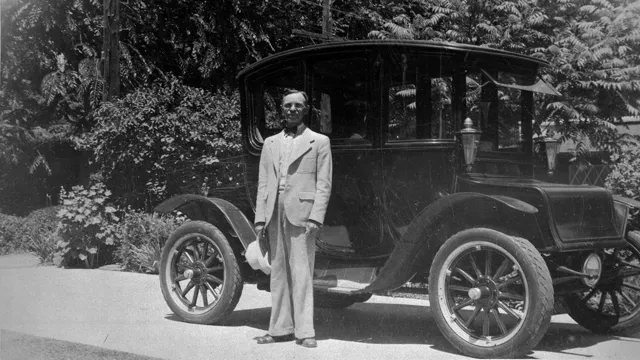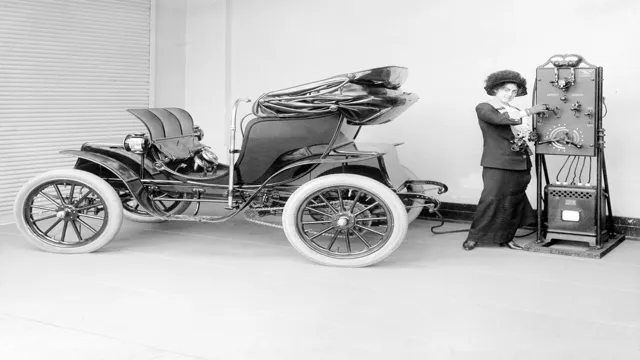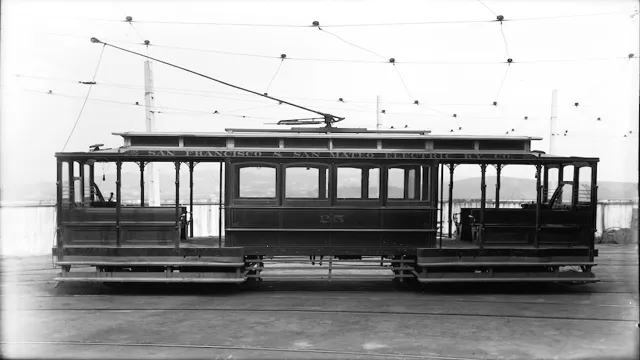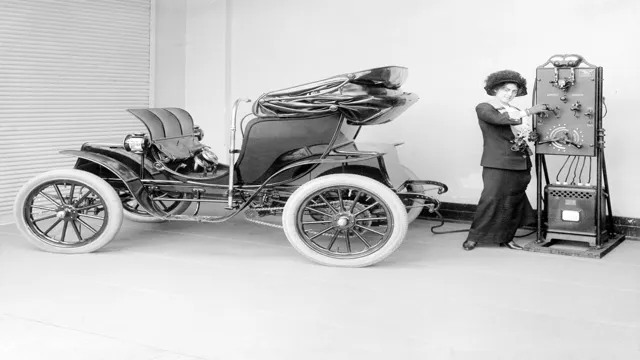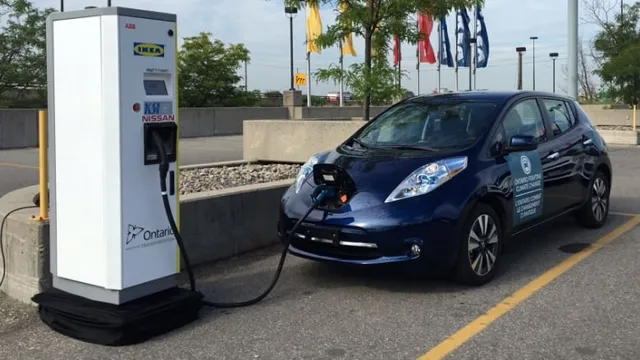The Electrifying Evolution: Tracing the History of Electric Cars
Electric cars have come a long way since the early days of the automobile industry. From fledgling prototypes to mainstream electric vehicles, there has been an impressive progression in technology and design. It’s hard to imagine now, but the first electric vehicle was built in the 1830s, long before the first gasoline-powered car was even invented.
In this article, we’ll take a closer look at the evolution of electric cars through the years, starting from the pioneering work of inventors and engineers in the late 19th century and ending with the innovative electric cars of today.
Early Days of Electric Cars
The history of electric cars dates back to the early 1800s when the first electric vehicle was built. The limited range and slow speeds of these early models made them impractical for widespread use. However, advancements in technology throughout the 20th century led to the development of more efficient electric cars, and they gained popularity in the 1970s and 1980s due to concerns over oil shortages and environmental pollution.
The introduction of the Tesla Roadster in 2008 sparked a new era of electric car innovation, leading to the creation of more affordable models with longer ranges, such as the Nissan Leaf and Chevrolet Bolt. The future of electric cars looks promising with the development of increasingly efficient batteries, charging technologies, and renewable energy sources that could potentially eliminate the need for fossil fuels altogether.
Late 1800s/Early 1900s
The late 1800s and early 1900s saw the early days of electric cars. While gas-powered cars dominated the market, inventors and entrepreneurs were experimenting with electric power. In fact, by 1900, electric cars made up around one-third of all cars on the road in the United States.
These early electric cars were limited in their range and speed, but they were much quieter and easier to operate than their gas-powered counterparts. They were also a popular choice for women drivers who found them easier to handle and more suitable for shorter trips. However, the rise of mass production and the discovery of oil reserves eventually pushed electric cars to the margins.
Nonetheless, the early electric car innovations opened the door for today’s EVs and demonstrated the potential of electric cars to serve as a sustainable and environmentally-friendly alternative to traditional gasoline-powered vehicles.
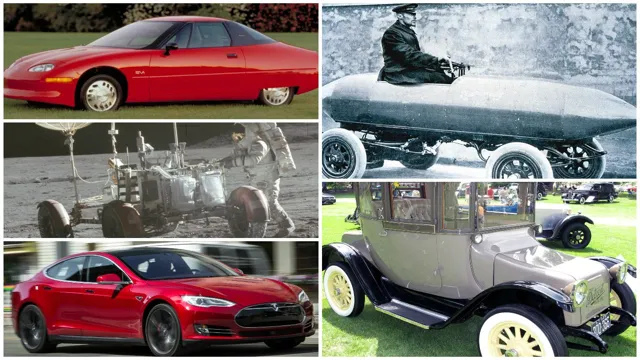
Limited Range and Popularity
In the early days of electric cars, one of the biggest limitations was their limited range and lack of popularity. Electric vehicles had a reputation for being slow and not being able to go very far, which made them unattractive to most consumers. The early models were also quite expensive, and there was limited infrastructure for recharging them.
As a result, only a handful of consumers were interested in buying electric cars, and most people preferred to stick with traditional gas-powered vehicles. Despite these difficulties, however, a few brave pioneers were willing to take a chance on electric cars, and they helped pave the way for the technology to improve and become more widespread in years to come. While electric vehicles are still not as popular as gas-powered cars, the market is rapidly growing and many people are starting to see the benefits of going electric.
With continued advances in battery technology and more charging stations popping up all over the world, it’s safe to say that electric cars are no longer just a trend – they’re the way of the future.
Return of the Electric Car
The history of electric cars can be traced back to the early 19th century when inventors first started experimenting with battery-powered vehicles. However, it wasn’t until the late 1990s that electric cars began to gain popularity, with the introduction of the General Motors EV1 and the Toyota Prius. Unfortunately, due to limited range and high costs, electric car sales never really took off, and many automakers discontinued their electric car programs.
Fast forward a few years, and we see the emergence of the Tesla Roadster, which proved electric cars could be both fast and practical. With advancements in battery technology and a growing concern for the environment, electric cars are now making a comeback. From the Nissan Leaf to the Chevy Bolt and Tesla Model S, electric cars offer a viable alternative to traditional gasoline-powered vehicles.
So if you’re in the market for a new car, consider going electric and help save the planet while enjoying a smooth and quiet ride.
1990s and Early 2000s
In the 1990s and early 2000s, the auto industry saw a resurgence of interest in electric vehicles following a lull since the early 20th century. With advancements in technology and a growing awareness of the need to reduce greenhouse gas emissions, automakers began investing in EVs again. Companies like General Motors, Toyota, and Honda all developed electric cars during this time, but they faced challenges such as limited battery technology, range anxiety, and high costs.
Despite these obstacles, the return of the electric car was a sign of hope for those looking to reduce their carbon footprint and embrace a cleaner future. Today, electric vehicles have come a long way, with longer ranges, faster charging times, and more affordable pricing. It’s clear that the electric car revolution is here to stay, and it’s up to us to embrace the change and create a sustainable future for generations to come.
Advancements in Battery Technology
Battery technology has come a long way in recent years, and one of the most exciting developments is the return of the electric car. With advances in battery capacity and charging speed, electric cars are once again becoming a practical choice for everyday drivers. Driving an electric car no longer means sacrificing performance or style, either.
Many new models boast impressive acceleration and handling, and look just as sleek as their gas-powered counterparts. And with government incentives and increasing public awareness about the need to reduce carbon emissions, the electric car market is primed for explosive growth. It’s an exciting time to be on the cutting edge of this technology, and we can’t wait to see what’s next.
Tesla and the Rise of Luxury Electric Cars
With the advent of Tesla, luxury electric cars have made a comeback and they are here to stay. The appeal of an electric car used to be limited to its eco-friendliness and fuel efficiency, but Tesla has changed the game. Their sleek designs, powerful performance, and cutting-edge technology have elevated the electric car to a status symbol.
And they’re not alone. Other luxury car brands like Audi and Porsche are jumping on the electric bandwagon with their own high-end electric models. The return of the electric car marks a shift in the automotive industry and the way we think about transportation.
No longer just a means of getting from point A to point B, our vehicles are becoming an extension of our lifestyles and identities. As consumers become more conscious of their environmental impact and seek out products that reflect their values, luxury electric cars offer a compelling and stylish alternative to traditional gasoline vehicles.
Electric Cars Today and the Future
The history of electric cars dates back to the early 19th century when inventors such as Thomas Davenport and Robert Anderson created the first crude electric cars. However, it wasn’t until the 20th century that electric cars gained popularity as an alternative to gasoline-powered vehicles due to concerns over pollution and rising fuel prices. The first modern electric car, the General Motors EV1, hit the market in 1996, but it was short-lived due to lack of consumer demand and pressure from oil industry groups.
Since then, electric cars have advanced significantly in terms of technology and design, with major automakers such as Tesla, Nissan, and Chevrolet leading the way in innovation. Today, electric cars are becoming more mainstream as consumers embrace their environmental benefits and lower operating costs. With continued advancements in battery technology and infrastructure, the future of electric cars looks very promising.
Growing Popularity and Availability
Electric cars have grown in popularity and availability in recent years, and their future looks bright. More and more people are becoming interested in reducing their carbon footprint, and electric cars are a great way to do that. Plus, advances in technology have made these cars more efficient and affordable, further bolstering their appeal.
Many automakers are investing in electric vehicles and expanding their offerings, with some companies aiming to have a fully electric lineup in the next few decades. It’s exciting to think about what the future holds for electric cars, as they become even more mainstream and accessible to more people. With advancements in battery technology and charging infrastructure, it’s likely that we’ll see even more electric cars on the roads in the coming years.
So, whether you’re interested in an electric car for its eco-friendly benefits or just want to try something new, there’s never been a better time to consider one.
Push for Sustainability and Clean Energy
As the push for sustainability and clean energy continues to gain momentum, electric cars have become a popular option for individuals looking to reduce their carbon footprint. Not only do electric cars emit significantly fewer greenhouse gases than traditional gas-powered vehicles, but they can also save drivers money in the long run. While electric cars are more expensive upfront, they require less maintenance and have lower operating costs.
Furthermore, advancements in technology have made it possible for electric vehicles to have longer ranges and faster charging times. As the demand for electric cars increases, we can expect to see further improvements in the technology and infrastructure needed to support them. The future of transportation is electric, and it’s an exciting time to be a part of this shift towards a more sustainable future.
Conclusion: What’s Next for Electric Cars?
In conclusion, the brief history of the electric car has been a rollercoaster ride of innovation and setbacks. From its humble beginnings in the early 19th century to the modern-day electric vehicles we see cruising on our roads, the electric car has come a long way. However, despite its many benefits, including environmental friendliness and reduced reliance on fossil fuels, it still faces significant challenges in terms of infrastructure and consumer demand.
Yet, as technology continues to advance and more people recognize the need to shift towards sustainable transportation, the electric car’s future is looking brighter than ever. So plug in, buckle up, and get ready for an electrifying ride towards a brighter, greener future.”
FAQs
When was the first electric car invented?
The first electric car was invented in the 1830s.
How popular were electric cars in the early 1900s?
Electric cars were quite popular in the early 1900s, with some reports suggesting they made up one-third of all cars on the road.
What caused the decline of electric cars in the 1920s and 30s?
A number of factors caused the decline of electric cars in the 1920s and 30s, including the availability of cheap gasoline, improvements in internal combustion engine technology, and the cost of batteries.
When did interest in electric cars start to pick up again?
Interest in electric cars started to pick up again in the 1990s, with the introduction of new battery technologies and concerns over air pollution and climate change.
